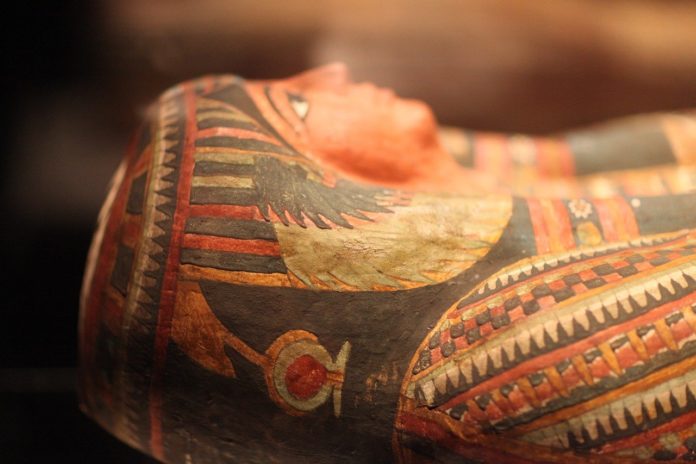High intensity X-rays have also revealed a mysterious object that was placed on the girl’s abdomen at the time of mummification.
An Egyptian mummy from the 1st century AD, which was decorated with the portrait of an adult woman, actually contained the body of a 5-year-old girl, claims a team of Chicago scientists.
American scientists have obtained more details about the mysterious girl and her burial through high-resolution scans and the application of X-ray microbeams aimed at specific regions of the mummy.
X–ray Computed Tomography (CT) scan of the mummy’s teeth and femur has confirmed its age. At the same time, no signs of trauma to its bones have been detected that may suggest the cause of death.
For this analysis, researchers have performed powerful CT scans to visualize the structure of the mummy as a whole. They have then focused on specific regions using X-ray diffraction. It is a technique according to which a heavily concentrated x-ray beam bounces off atoms in crystalline structures. Variations in diffraction patterns reveal what type of material the object is made of.
This is the first time X-ray diffraction has been used on an intact mummy, reports Stuart Stock, lead author of the study published in the Journal of the Royal Society Interface, a research professor of Cell Biology and Biology Development of the Northwestern University Feinberg School of Medicine, Chicago.
The mummy, known as Portrait Mummy No. 4 of Hawara, is in the collection of the Northwestern University Block Museum of Art. It was excavated between 1910 and 1911 in the Necropolis of Hawara, near the oasis of El Fayum, in Lower Egypt, and dates from around the 1st century AD, when the country was under Roman rule.
“During Roman times, Egypt began to make mummies with portraits attached to the front surface,” Stock explains.
The expert comments that thousands of portraits were made, but most of them were removed from the mummies, perhaps only 100 to 150 still have the attached portrait.
Although the portrait of mummy number 4 depicts an adult female, its small size hinted otherwise and later analysis confirmed that the mummy was a girl, who did not even have permanent teeth. Her body measured almost a meter from the top of her skull to the soles of her feet, according to the study.
Researchers have also detected 36 needle-shaped pieces: 11 around the head and neck, 20 near the feet and five in the torso. X-ray diffraction has determined that these are metal wires or pins that probably served in the last century to stabilize the envelope.
Also, a surprising find has been an uneven layer of sediment on the mummy’s wrappers, perhaps the mud that was used by priests to secure bandages during mummification, Stock suggests.
Another puzzling discovery has been a small elliptical object about seven millimeters long, researchers found among the mummy bandages on the abdomen and which called Inclusion F. X-ray diffraction has shown that it was made of calcium. It is probably an amulet that has been placed after the girl’s body was damaged during the mummification process, Stock explains. When that happened, the priests often placed an amulet like a scarab on the damaged part of the body to protect the person afterlife.
However, the resolution of the CT scan has not been powerful enough to show carved details on the object, so it is impossible to say with certainty what it is, he adds.
“Every time you go into a study like this, you get good answers. But in the end you end up asking more questions,” says the scientist.
